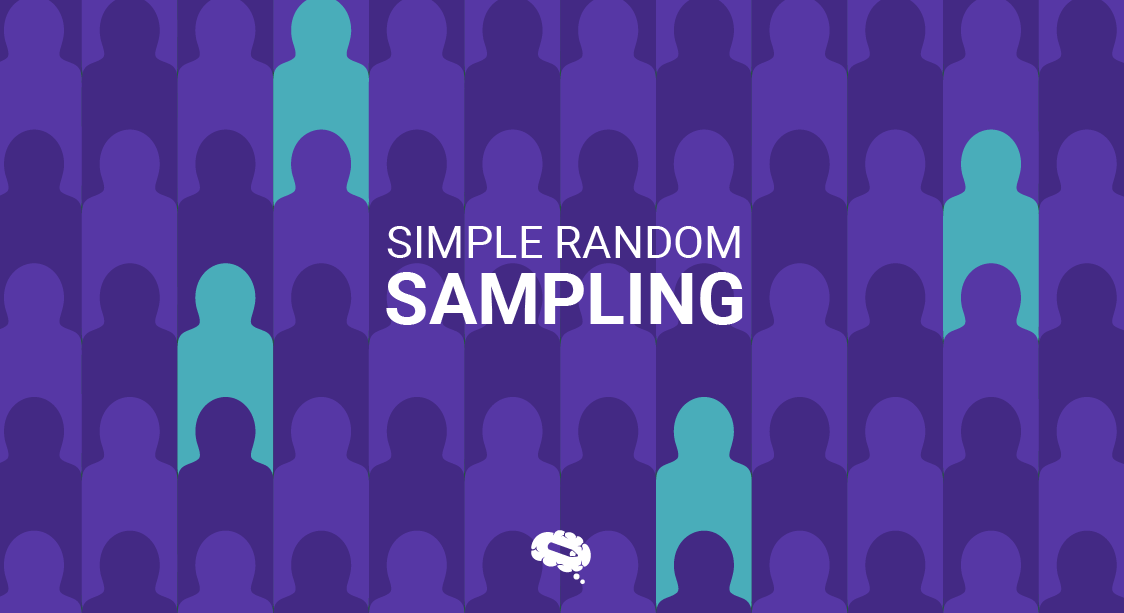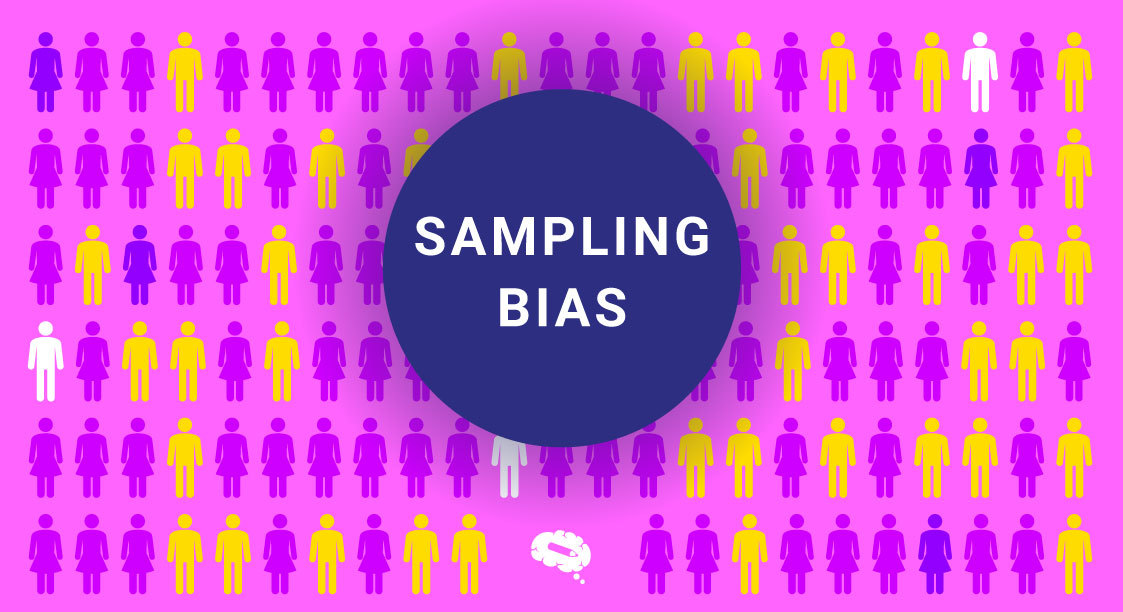In the world of data collection, the accuracy and dependability of your results rest on the techniques you use to collect data. Simple random sampling is one of the most fundamental and commonly used methods. This approach ensures that each member of a population has an equal opportunity to be chosen, thus laying a strong foundation for impartial data analysis.
Simple random sampling is crucial in various fields, including market research, social sciences, healthcare, and engineering. Its importance is not only in its easy application but also in its ability to generate representative samples that mirror the actual traits of a population. By understanding and employing simple random sampling, researchers can improve the credibility of their research, make well-informed decisions, and draw valuable insights from their data.
In this blog post, we will explore the basics of simple random sampling. We’ll dive into how it functions, its significance in data collection, and its practical application across different scenarios. Whether you’re an experienced researcher or new to the field, this guide will provide you with the knowledge to utilize simple random sampling in your data collection pursuits effectively.
Simple Random Sampling
In simple random sampling, each member of a population has an equal chance of being selected. The method minimizes bias and enhances the results’ reliability by ensuring that the sample represents the larger population accurately. Simple random sampling is typically implemented by following these steps:
- Identify the specific group from which you wish to select your sample.
- Give each member of the population a distinct number.
- Utilize a random number generator or a comparable method to choose a sample from the population. Ensure that each member has an equal opportunity to be chosen in order to guarantee the random nature of the process.
This approach is commonly employed because of its ease and efficiency. It is especially valuable when dealing with a uniform and sizable population, as it allows for obtaining a sample that accurately represents the population without the need for the complications of stratification or clustering.
Importance Of Simple Random Sampling
- Minimizes Bias: Utilizing simple random sampling reduces selection bias, ensuring that each individual has an equal chance of being chosen. This results in more dependable and accurate findings, as the sample is more likely to represent the true characteristics of the entire population.
- Easy to Implement: The straightforward nature of this technique makes it simple to comprehend and carry out. Researchers can easily utilize it without needing advanced statistical knowledge or complex tools.
- Basis for Statistical Analysis: The random selection of the sample establishes a robust basis for various statistical analyses. It allows for applying probability theory to draw conclusions about the population based on the sample.
- Versatility: Simple random sampling is adaptable and can be utilized in various research areas such as social sciences, healthcare, market research, and beyond. Its ability to be applied in different fields underscores its essential function in research methodologies..
Importance Of Data Collection In Research
Data collection is a critical component of the research process, serving as the backbone of empirical investigation. The quality and integrity of the collected data directly influence the research findings’ validity and reliability. Here’s why data collection is so important:
- Accurate data collection allows researchers to make well-informed decisions using empirical evidence. This is essential in areas such as healthcare, where data-based decisions can affect patient outcomes, or in business, where they can shape strategic planning.
- Testing and validating hypotheses is enabled by gathering high-quality data, allowing researchers to advance knowledge and theory within a discipline and providing a strong foundation for research conclusions.
- Trends and patterns that may not be obvious without a structured approach can be identified through systematic data collection, leading to new insights and discoveries that drive innovation and progress.
- The credibility and reliability of research are enhanced by well-documented and accurately collected data, which is crucial for peer-reviewed studies and replication efforts.
- Effective data collection in fields such as public policy and resource management assists in the optimal allocation of resources, ensuring they are used efficiently and effectively to address the population’s needs.
- Transparent data collection methods and thorough documentation ensure accountability in research, fostering trust among stakeholders, including the public, funding agencies, and the scientific community.
Basic random sampling is a fundamental method in gathering data that guarantees impartial, representative samples. Its significance is emphasized by its simplicity in execution and its role in generating dependable data for analysis. When combined with the crucial aspect of data collection in research, these techniques establish the foundation of strong scientific investigation and well-informed decision-making. By mastering basic random sampling and prioritizing the collection of high-quality data, researchers can significantly improve the credibility and influence of their studies.
Techniques Of Simple Random Sampling
In order to carry out simple random sampling effectively, researchers can employ a range of techniques to guarantee that every individual in the population has an equal opportunity of being chosen for the sample. There are several common methods that can be used to achieve this, including simple random sampling from a list, using random number generators, and employing a random start and a fixed interval.
Lottery Method
The lottery method is a simple and intuitive technique for selecting a random sample. Here’s how it works:
- Prepare the Population List: Write down the names or unique identifiers of each member of the population on separate slips of paper.
- Mix Thoroughly: Place all the slips into a container and mix them thoroughly to ensure randomness.
- Draw the Samples: Draw the required number of slips from the container without looking. Each drawn slip represents a sample member.
When using this method, one of the advantages is that it’s simple and easy to understand, and doesn’t require specialized tools or technology. However, it might be time-consuming when dealing with large populations. Additionally, it may be less practical for very large datasets or when a high degree of precision is required. Furthermore, this method is more susceptible to human error due to the manual process and can be biased if the selection of samples is not random.
Random Number Generator
A modern method for simple random sampling involves using random number generators, which is especially helpful for efficiently handling large datasets. Here are the steps that can be followed:
- Assign a unique number to each member of the population.
- Utilize a random number generator, which is available in software like Excel, R, or Python, to select random numbers within the range of the assigned numbers.
- Match the generated random numbers with the corresponding members in the population list to select the samples.
The system has several advantages. It is highly efficient and scalable for large populations. It is also easy to automate and integrate with data processing software. However, there are some disadvantages to consider. It requires access to a computer and knowledge of software tools. Additionally, there is the potential for technical errors if not properly managed. There is also a risk of data breaches if the data is not protected. Finally, it can be difficult to ensure the accuracy of the data.
Random Sampling Tables
Research often requires the use of random sampling tables, also known as random number tables, which are essentially pre-generated lists of random numbers. These tables are a valuable tool for researchers when they need to select samples from a population. The process typically involves the following steps:
- Assigning Numbers: Each member of the population is assigned a unique number for identification.
- Consulting the Random Sampling Table: To start selecting numbers, a random starting point in the table is chosen.
- Selecting the Samples: Numbers are then read sequentially from the table and matched with the corresponding members in the population list in order to select the samples.
Using random sampling tables allows for a systematic and unbiased way of selecting samples from a population for research purposes. The manual method for generating random numbers provides an alternative when using a random number generator is not possible due to limited access to technology. However, it can be tedious and prone to human error if not managed carefully. Additionally, manual methods are less flexible compared to digital methods when dealing with large datasets.
Simple random sampling is widely used in research to ensure unbiased and representative samples. Different methods such as the lottery method, random number generators, and random sampling tables each have unique advantages and are suitable for various research contexts. By carefully selecting the appropriate method, researchers can effectively implement simple random sampling and ensure the integrity of their data collection process.
In research, rigorous data collection is essential for valid and reliable research outcomes. High-quality data collection underpins decision-making, hypothesis validation, and trend identification. Whether conducting a small-scale survey or a large-scale study, mastering simple random sampling techniques and prioritizing meticulous data collection will significantly enhance the credibility and impact of the research.
Advantages Of Simple Random Sampling
Simple random sampling is a valuable and widely used method in research for many reasons. Notably, it provides an unbiased representation of the larger population, making the results more generalizable. Additionally, it is relatively easy to implement and can be applied to both large and small populations. Moreover, simple random sampling allows for the use of statistical methods to analyze data and draw meaningful conclusions. These advantages make it a preferred method in various research contexts.
Unbiased Representation of Population
Simple random sampling offers the primary advantage of providing an unbiased representation of the population.
- Equal Opportunity: This method ensures that each member of the population has an equal chance of being selected, eliminating any systematic bias in the selection process. Consequently, the sample accurately mirrors the diversity and characteristics of the entire population.
- Reduced Bias: By eliminating subjective elements in the sampling process, simple random sampling minimizes the potential for selection bias, resulting in more dependable and valid results.
Generalizability of Results
Simple random sampling is a powerful method because it can provide results that are applicable to a larger population.
- Representative Samples: Since the sample is selected randomly, it is more likely to accurately represent the larger population. This improves the capability to apply the findings from the sample to the entire population.
- Applicability to Various Contexts: The generalizability guarantees that the research findings can be extended to other similar contexts or populations, thereby enhancing the usefulness and wider applicability of the results.
Statistical Inference
Simple random sampling is known for facilitating robust statistical inference, which is important for analyzing data and drawing conclusions.
- Foundation for Statistical Tests: The random nature of the sample selection process satisfies the assumptions underlying many statistical tests, allowing researchers to apply inferential statistics with confidence.
- Estimation of Population Parameters: Simple random sampling enables accurate estimation of population parameters (e.g., mean, proportion) and calculation of confidence intervals. This helps quantify the uncertainty associated with the estimates.
- Error Measurement: The technique allows for straightforward calculation of sampling error, making it easier to understand the precision and reliability of the results.
Challenges And Considerations
Although simple random sampling has many benefits, it also presents specific difficulties and factors that researchers need to understand in order to use this method effectively. Here are some main challenges and ways to deal with them:
Implementation in Large Populations
When conducting simple random sampling in large populations, several challenges may arise. One major difficulty is the process of creating a comprehensive list of all members in the population, which can be logistically complicated and time-consuming. Ensuring that the list is accurate and up-to-date is crucial but challenging. Additionally, when it comes to selecting samples randomly from a large list, efficient tools and methods are necessary. Manual selection methods, such as the lottery method, become impractical, requiring the use of random number generators or software solutions.
To address these challenges, there are several solutions that can be implemented:
- Utilize advanced data management tools to effectively handle large datasets.
- Implement computer-based random number generators to streamline the random selection process.
- Consider using stratified sampling if the population is heterogeneous, where the population is divided into strata and random sampling is performed within each stratum to maintain manageability and representation.
Sampling Errors
It’s important to consider that sampling errors can pose a challenge in any sampling method, including simple random sampling.
Sampling variability occurs because a sample only represents a portion of the population, leading to some level of variability in the results. Different samples may yield slightly different results due to this factor. On the other hand, non-sampling errors are not related to the sampling method but can occur due to factors such as data collection errors, non-response bias, and measurement errors.
Remember to consider increasing the sample size, as it can help to reduce sampling variability and improve the accuracy of the estimates. Additionally, implementing strict data collection protocols can minimize non-sampling errors. Lastly, conducting pilot studies can be beneficial in identifying and addressing potential sources of errors before the main data collection.
Resource Intensiveness
Sampling methods, like simple random sampling, can be resource-intensive due to the time, cost, and effort involved. Listing the entire population, ensuring randomness, and managing the logistics of data collection can be both time-consuming and costly. Additionally, the process requires careful planning and execution to guarantee that the sample is truly random and representative.
In the research design phase, it’s important to allocate sufficient resources and budget for the sampling process. Additionally, leveraging technology to automate certain aspects of the sampling process can help reduce manual effort and minimize the potential for human error. If simple random sampling is too resource-intensive for the given research context, it may be beneficial to consider alternative sampling methods such as systematic sampling or cluster sampling.
Discover The Power Of Scientific Storytelling With A Free Infographic Maker
Dive deep into your research and effortlessly craft engaging visuals that captivate your audience’s attention. From intricate data sets to complex concepts, Mind the Graph empowers you to create compelling infographics that resonate with readers. Visit our website for more information.

Subscribe to our newsletter
Exclusive high quality content about effective visual
communication in science.





